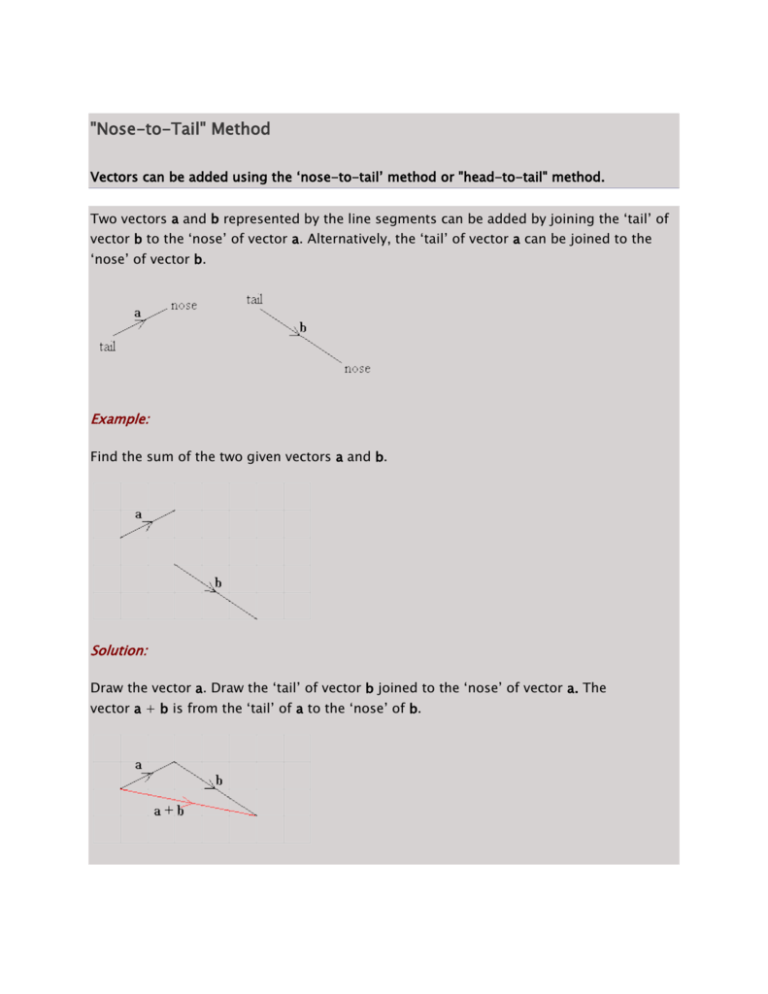"Nose-to-Tail" Method
advertisement

"Nose-to-Tail" Method Vectors can be added using the ‘nose-to-tail’ method or "head-to-tail" method. Two vectors a and b represented by the line segments can be added by joining the ‘tail’ of vector b to the ‘nose’ of vector a. Alternatively, the ‘tail’ of vector a can be joined to the ‘nose’ of vector b. Example: Find the sum of the two given vectors a and b. Solution: Draw the vector a. Draw the ‘tail’ of vector b joined to the ‘nose’ of vector a. The vector a + b is from the ‘tail’ of a to the ‘nose’ of b. Example: Given that , find the sum of the vectors. Solution: Triangle Law of Vector Addition In vector addition, the intermediate letters must be the same. Since PQR forms a triangle, the rule is also called the triangle law of vector addition. Graphically we add vectors with a "head to tail" approach. Image: The parallelogram law, or commutative law, of vector addition The parallelogram demonstrates that one obtains the same vector by adding a+b or by adding b+a. The sum a+b is formed by putting the tail of b at the head of a and creating the vector from the tail of a to the head of b. The sum b+a is formed by putting the tail of b at the head of a and creating the vector from the tail of b to the head of a. The parallelogram shows that both of these vectors are the same diagonal of the parallelogram.



